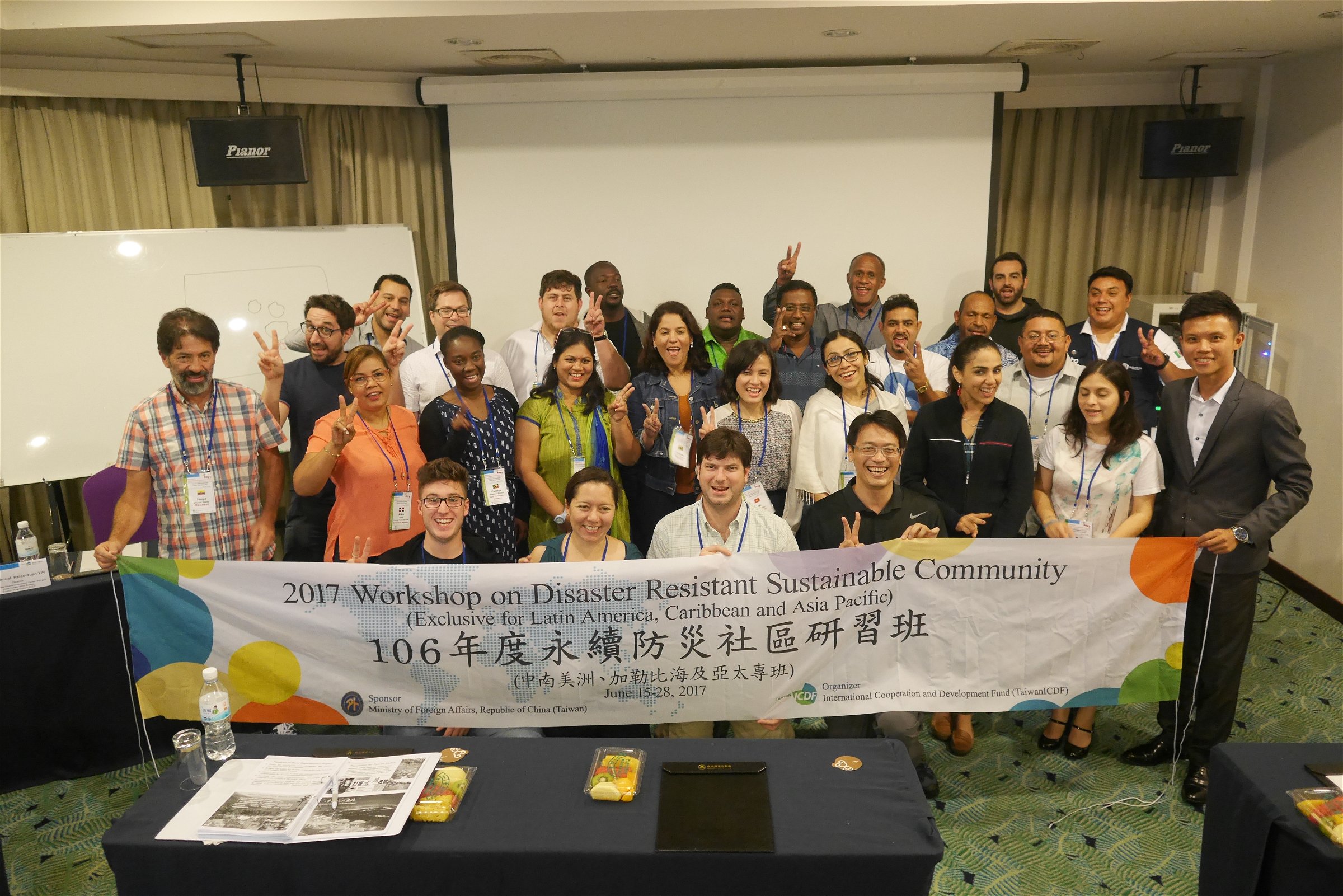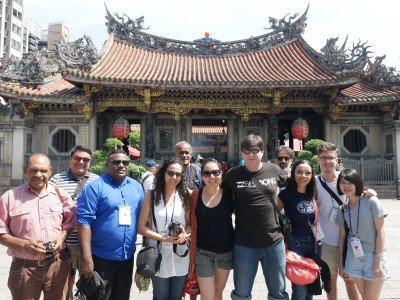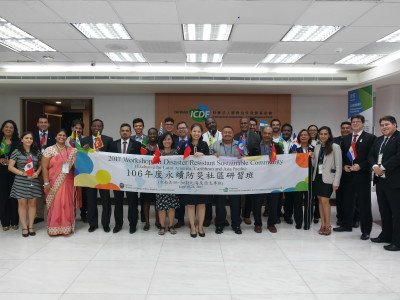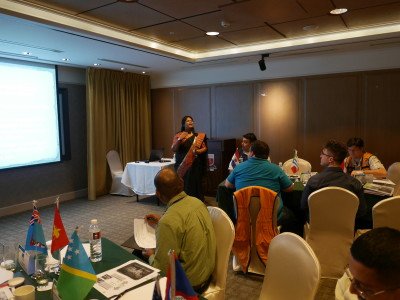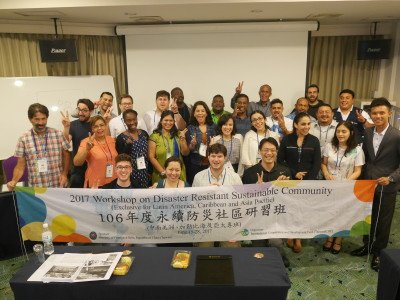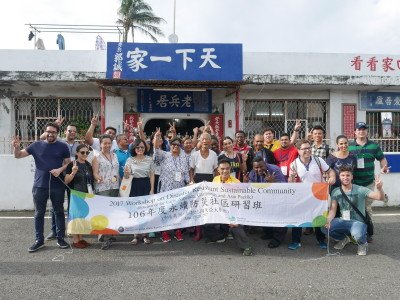Workshop on Disaster Resilient Sustainable Communities
(Exclusive for Asia Pacific, Caribbean Islands and Latin America)
Taiwan Ministry of Foreign Affairs in collaboration with International Cooperation and Development Fund organized Workshop on Disaster Resilient Sustainable Communities from June 15th to 28th 2017.
Mrs. Vimala Britto, Founder, SEEK FOUNDATION an NGO gave me an opportunity to represent India for the workshop. It consisted of 25 members from 20 different countries like
India, Srilanka, Mexico, Fiji, Belize, Brazil, Paraguay, Uraguay, Solomon Islands, Argentina, United States, St. Vincent Islands, St. Christopher and Nevis Islands, Dominican Rebublic, Peru, Papua New Guinea, Vietnam, Ecuador, Chile, Columbia.
Workshop Venues
The National Science and Technology Center for Disaster Reduction
The main functions of The National Science and Technology Center for Disaster Reduction include: “R&D promotion”, “technical support”, and “application implementation”. . It shall also facilitate the vertical integration of the disaster prevention and response technical development system to bring technical R&D results closer to people’s surrounding environment and enhance security and happiness in life.
The Central Weather Bureau
The Central Weather Bureau (CWB) was established in 1941 in Chongqing, mainland China, as a unit within the Executive Yuan. It had been under the jurisdiction of the Ministry of Transportation and Communications (MOTC) in 1947. The CWB is concerned with both meteorological and seismic phenomena and their mechanisms. The missions of the CWB include observations, forecasts and warnings. Ocean-Floor Seismic Observatory” project off eastern Taiwan, and actively planning the next-generation of seismic monitoring network.
Taiwan Geographic Information System Center (Taiwan GIS Center)
The Taiwan Geographic Information System Center (Taiwan GIS Center) is a corporate research institution founded on September 25, 1963 with the donation from the National Development Commission. It aims to align with government information development policies, assists in improving the informatization of management of domestic industries, industrial automation and application development to benefit the improvement of industry structure, promote economic transformation, and enhance the international competitiveness of industries.
Vision : Promote the use of geospatial technologies in decision-making and coordinate the application and development of geographic information systems between the public and private sectors
Visiting Spots:
Tamsui Fisherman’s Wharf
Located in Tamsui (Danshui), New Taipei City (formerly Taipei County), Tamsui Fisherman’s Wharf is one of the popular scenic spots in Taipei since its opening in 2001. It was established for two reasons: fishing and sightseeing. The sunset view here at the Fisherman’s Wharf is considered as one of the eight famous must-see sceneries of Tamsui.
Tamsui Old Street & Tamsui’s Gold Coast
Tamsui used to be called Huwei. It is a derivation from the ancient tongue Hoba. It means the river outlet. Tamsui is located in northwest of Taipei basin. Tamsui is surrounded by mountains and rivers and the scenery is beautiful. Hongmau Castle is a historical site in Tamsui with historical meaning. It was built by the Spaniards in 1626 and restored by the Dutch.
Chiang Kai-Shek Memorial Hall
In April, 1975, the entire nation mourned the passing of President Chiang Kai-shek. In June, in response to suggestions from all sectors, the funeral committee members decided to build the CKS Memorial Hall in Taipei, in order to commemorate the memory of our great leader. No sooner had this decision been made, than the CKS Memorial Hall Preparatory Committee was officially established. Later, in October 1976, a CKS Memorial Hall Building Preparatory Directing Committee was established. The underlying concepts of the design:
1. To express the spirit of Chinese culture
2. An innovative design in a unique and grand style
3.The utilization of modern construction technology, with emphasis on economy and practical use. The color of the blue sky and white sun symbolize freedom and equality.
Taipei 101 Building
Taipei 101 formerly known as the Taipei World Financial Center, is a landmark skyscraper located inXinyi District, Taipei, Taiwan. The building ranked officially as the world’s tallest from 2004 until the opening of the Burj Khalifa in Dubai in 2010. In July 2011, the building was awarded LEED Platinum certification, the highest award in the Leadership in Energy and Environmental Design (LEED) rating system and became the tallest LEED building in the world.
The tower has served as an icon of modern Taiwan ever since its opening, and received the 2004 Emporis Skyscraper Award. Fireworks launched from Taipei 101 feature prominently in international New Year’s Eve broadcasts and the structure appears frequently in travel literature and international media.
Taipei 101 comprises 101 floors above ground and 5 floors underground. The building was architecturally created as a symbol of the evolution of technology and Asian tradition.
To prevent the building from swaying during typhoons or earthquakes, an 800-ton, US$4 million, ball-shaped damper is used to dissipate lateral vibration to a spring system underneath. For the first time in architectural history, the damping system is not hidden, but part of the building’s design. This world’s largest damper ball has a diameter of 5.5 meters and is visible from the 88th and 89th floors.
Longshan Temple
Longshan (lungshan) Temple is a famous old temple in Taiwan. It is for worshiping Guanshiyin Budda and other divine spirits. Longshan (lungshan) Temple is facing the South. Its architecture is a three-section design in shape. There are the front hall, the rear hall and the right/left dragons protecting the middle hall. The layout is square and serene. The temple was built in Qianlong 5th year in Qing Dynasty. Due to natural disaster and damages caused by men, the temple was restored for several times. The doors, beams, and poles are beautifully decorated. There is a pair of bronze dragon poles in the front hall, four pairs of dragon poles in the middle hall.
Learning Outcomes: Taiwan policies and strategies on environmental management
Field Trip to communities gained a lot of knowledge from different county e.g. Volunteer work from community and how community value collaboration during disaster events.
Hardware-infrastructure such as roads and bridges
Human ware-Human management that is coordinating and managing different players before, during and after is vital to Disaster management.
New Software/tools such as GIS, google for accurate hazard mapping and so forth…
Technology requires more research to be conducted at the community level.
Human Management, improve community awareness, training and simulation exercises.
Investigate; develop more precise community hazard maps and so on…
Set-up early warning arrangement and evacuation plan.
Knowledge, real time early warning system linking different authorities/stakeholders
The GHG Reduction and Management Act
To build a disaster resilient community in the disaster prone area.
The Big data and open data, the hazard mapping and flood gates.


